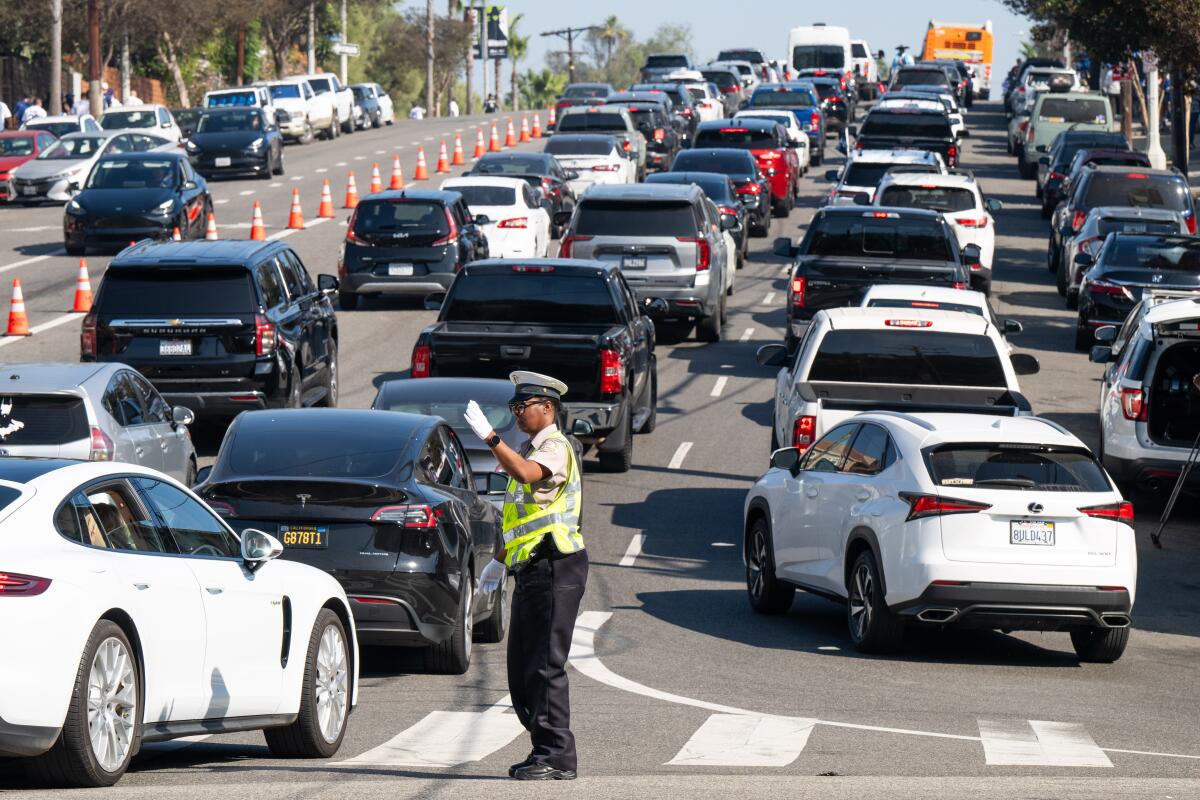
As the clock strikes 3 p.m., anticipation builds for the Dodgers as Jack Flaherty prepares to take the mound in just two hours. Outside Dodger Stadium, the scene is far from serene; the streets of Elysian Park are gridlocked. A long stretch of Stadium Way is barely moving, with parts of the 5 and 110 Freeways following suit. The air is charged with frustration as fans honk their horns, desperate for any sign of progress.
For many, the thought of spending $800 on a ticket is only worthwhile if they can actually make it to the game. Miguel Hernández, stuck in a black Suburban, lamented, “We haven’t moved in five minutes.” With the start of the 120th World Series and several other major events occurring across the city, the evening quickly transforms into what some are calling a “traffic nightmare.”
As the city buzzes with excitement from multiple venues – including a Lakers game and high school football – the traffic chaos reaches a fever pitch. One fan, sporting a blue goatee, humorously remarked that it felt like a “trafficopolypse” or “carmageddon,” referencing the infamous traffic issues of past years. Even Alex Rodriguez, serving as an analyst for the Series, was spotted sprinting toward the stadium in a TikTok video, illustrating the lengths fans are willing to go to make it to the game.
Dodger Stadium has raised parking fees from $50 to $75 for the World Series, prompting many to seek alternative parking solutions. As frustration mounts, some drivers abandon their attempts, U-turning back into the quieter streets of Echo Park. Apps like ParkWhiz advertised parking options, but availability dwindled quickly, leading fans to weigh their choices as game time approached.
- Traffic congestion increases during major events, making planning essential.
- Alternative transportation options can alleviate parking headaches.
- Parking fees can influence fans' decisions to attend games.
- Stadium events can cause significant traffic disruptions in surrounding areas.
As the game time approaches, the Los Angeles Department of Transportation deploys officers to manage the chaos, and Metro increases bus service to accommodate fans. Last week, a suggestion was made for fans to walk to the A Line’s Chinatown Station to avoid traffic, but the idea was met with criticism. Despite the challenges, some fans embrace the hike, determined not to miss the first pitch.
“It’s a hike, but it’s better than being stuck in a car during the 1st inning,” said Justin Chang, who won his tickets at work. With an hour-long journey involving a Metro ride and a walk, he was ready to enjoy the game.



